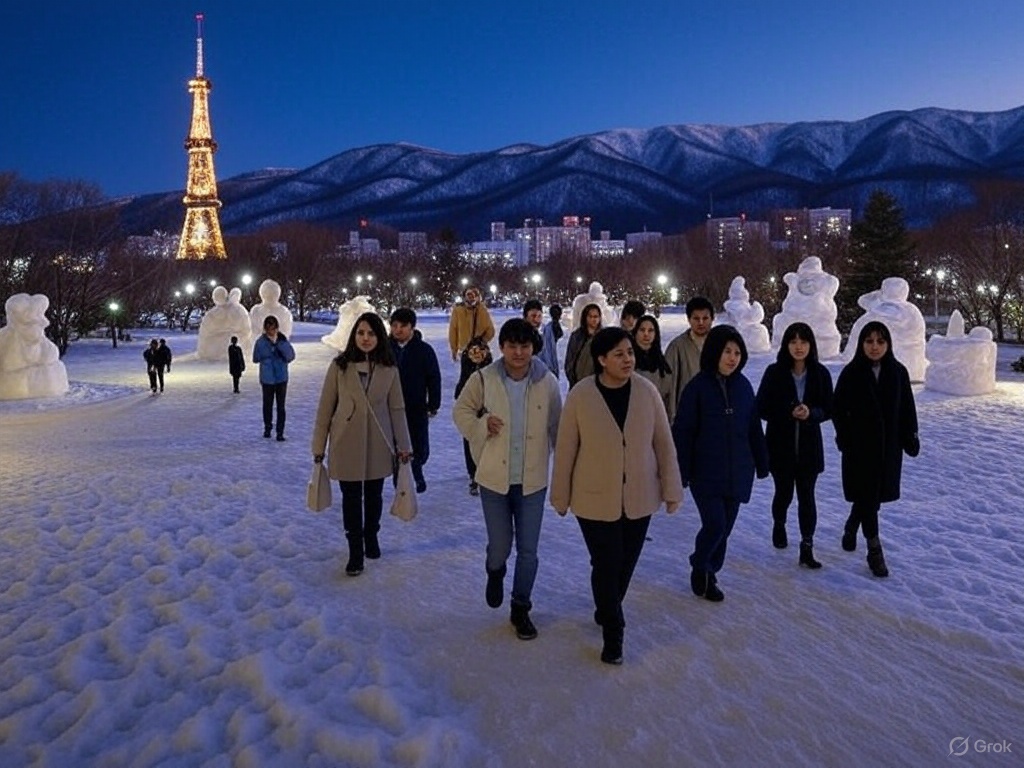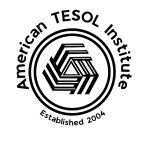From the snowy streets of northern Japan to the equatorial heights of Ecuador and back to a forward-thinking suburb west of Tokyo, these three destinations offer TESOL teachers affordable living, unforgettable food, and travel stories your students will love hearing about. Whether you’re looking to immerse yourself in vibrant cultures or bring authentic experiences back to your classroom, Sapporo, Quito, and Musashino have it all.
Sapporo: Hokkaido’s Winter Wonderland
Famous for its Snow Festival and as the birthplace of Japanese beer culture, Sapporo offers universal health coverage (foreign teachers are eligible for National Health Insurance after arrival) and a cost of living nearly 30% lower than Tokyo.
Sapporo Snow Festival at Odori Park Caption: The Sapporo Snow Festival at Odori Park, featuring intricate snow sculptures and the iconic TV Tower illuminated at night. Alt text: A nighttime view of Odori Park in Sapporo, Japan, during the Snow Festival, with illuminated snow sculptures and the TV Tower in the background.
Visitors at Sapporo Snow Festival Caption: Visitors enjoy the Sapporo Snow Festival with snow sculptures and the TV Tower in the background. Alt text: A group of people walking through Odori Park in Sapporo, Japan, during the Snow Festival, surrounded by snow sculptures with the TV Tower and snow-capped mountains in the background.
Foodie Highlights
- Soup Curry: A spicy Hokkaido spin on classic curry rice, loaded with local veggies and tender chicken.
- Jingisukan: Barbecued mutton grilled at your table—named after Genghis Khan!
- Sapporo Ramen: Rich miso-based broth topped with corn and butter to fight the cold.
Fun Facts & Travel Tips
- Sapporo brewed Japan’s first lager in 1876; the <a href=”https://www.sapporobeer.jp/english/” rel=”nofollow” target=”_blank”>Sapporo Beer Museum</a> is still the nation’s only beer museum.
- Catch the Otaru Snow Light Path Festival in February—just 30 minutes by train.
- Affordable weekend ski trips: local trains reach Teine and Kokusai resorts in under an hour.
Quito: The Andean Capital in the Clouds
At 2,850 m (9,350 ft), Quito is the second-highest capital on Earth and the first city ever declared a UNESCO World Heritage Site (1978). Teaching here means Spanish immersion, mild spring-like weather year-round, and travel hubs for both mountains and ocean.
Bucket-List Excursions
- Cotopaxi National Park: Camp beneath one of the world’s tallest active volcanoes.
- Cuenca: A colonial gem praised for its panama hat workshops (the hats are really Ecuadorian!).
- Galápagos Islands: Budget airlines now link Quito to Baltra in under two hours—look for teacher discounts.
Must-Try Eats
- Locro de Papa: Creamy potato-cheese soup topped with sliced avocado.
- Empanadas de Viento: Puffy, cheese-filled pastries dusted with sugar—perfect classroom snack.
- Canelazo: A hot cinnamon-spiced sugar-cane drink that wards off mountain chill.
Musashino: Tokyo’s Green Tech Trailblazer
Musashino City, centered on the artsy Kichij?ji district, ranks among Japan’s happiest places to live thanks to fair income distribution, top-tier public services, and ground-breaking eco-policies.
Eco-Innovation Snapshot
City planners created a unique “reverse mortgage” program: residents aged 65+ swap land titles for lifetime care, allowing the municipality to convert former residences into shared green spaces and rooftop farms.
Why TESOL Teachers Love Musashino
- Quick commute: 15 minutes by JR Ch?? Line to Shinjuku, yet far greener and quieter.
- Inokashira Park: Paddle boats by day, cherry-blossom picnics by night.
- Plenty of part-time Eikaiwa (conversation school) posts plus intercultural clubs at Asia University.
Local Cuisine to Share With Students
- Monjayaki: Tokyo’s runnier cousin to okonomiyaki—DIY grill fun for classroom outings.
- Mame-daifuku: Chewy rice cakes with azuki beans sourced from Hokkaido’s best farms.
Bringing It All Back to the Classroom
Each city offers unique content for culture lessons—whether demonstrating furikake seasoning in a Sapporo food-vocab unit, role-playing Quito’s Mercado Artesanal, or analyzing Musashino’s urban-planning English news articles.
Tip for Teachers: Ask students to create travel itineraries or cooking shows based on these destinations—authentic project-based tasks that build real-world fluency.
Conclusion
Sapporo, Quito, and Musashino aren’t just destinations—they’re gateways to cultural immersion and classroom inspiration. As a TESOL teacher, these experiences will enrich your lessons and connect your students to the world in meaningful ways. Have you visited any of these places, or do you have other favorite destinations for TESOL teachers? Share your thoughts in the comments below!



